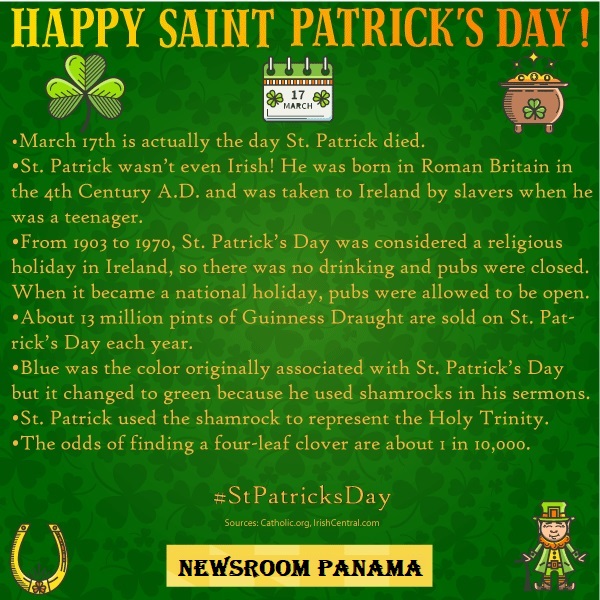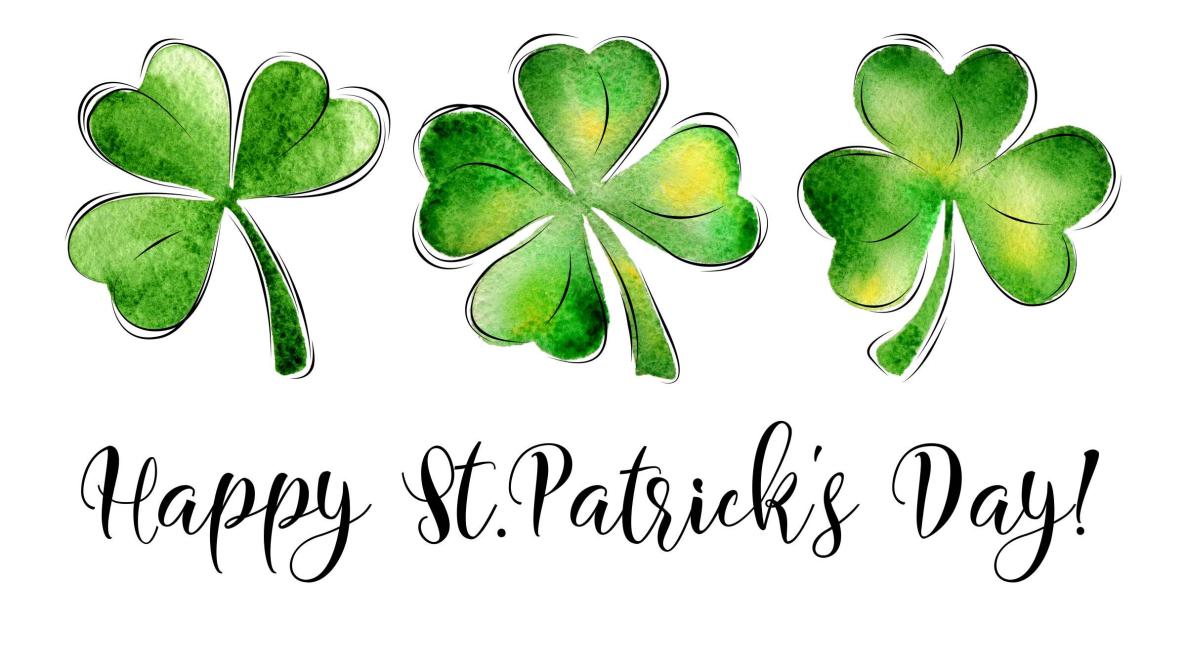March 17th
The colors of the Irish flag are green, white and orange, the green symbolizing the Irish nationalism, the orange symbolizing the Orangemen of the north and the white symbolizing peace. So why do people cloak themselves in green? There is the mythical belief that green is to be worn to "make you invisible to leprechauns". The Irish Americans would wear the green as a reminder that they were nationalists first and foremost. St. Patrick's Day began as a Catholic Feast Day. Green became connected to St. Patrick's Day after Irish rebellions. St. Patrick is thought to have been a Roman citizen in Britain who was enslaved and taken to Ireland, either escaped or was released, then returned as a priest and converted Druids to Christianity. It was originally started in 1631 by the Catholic Church as a Feast Day honoring St. Patrick—one of many church holidays. Legend has it that St. Patrick used the shamrock, a three-leaf clover, to teach the Christian doctrine of the Trinity—Father, Son, and Holy Spirit in one. The shamrock was the emblem of the March 17th holiday and the country of Ireland’s national symbol. The shamrock became associated more broadly with Ireland as a symbol during rebellions against Britain in the 18th century. The color green dates back to the Great Irish Rebellion of 1641, where Catholic local leaders revolted against the English crown, using a green flag with a harp as an emblem. Green was worn again during the Irish Rebellion of 1798. The Irish forces promoted the nationalistic ballad “The Wearing of the Green” which immortalized the color’s connection with Ireland. The first recorded parade on the Catholic Feast Day of St. Patrick was held on March 17, 1601, in a Spanish colony in modern-day St. Augustine, Florida. More than a century later, Irish soldiers serving in the English military marched in Boston in 1737 and in New York City in 1762. St. Patrick’s Day was promoted by the Irish government. Inspired by Irish-Americans, Ireland’s National Agricultural and Industrial Association organized a parade in Dublin in the early 1950s to showcase Irish industry, according to the National Museum of Ireland Dublin Tourism took over the parade from 1970, until a St. Patrick’s Day Committee was established in 1995, which grew the festival into a weekend and then a week.

